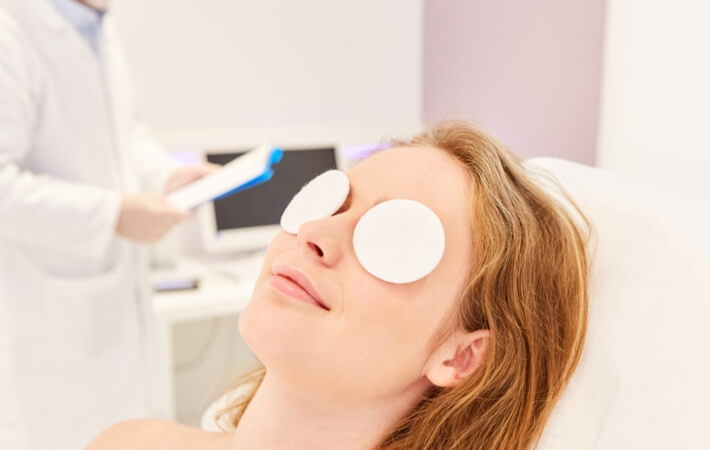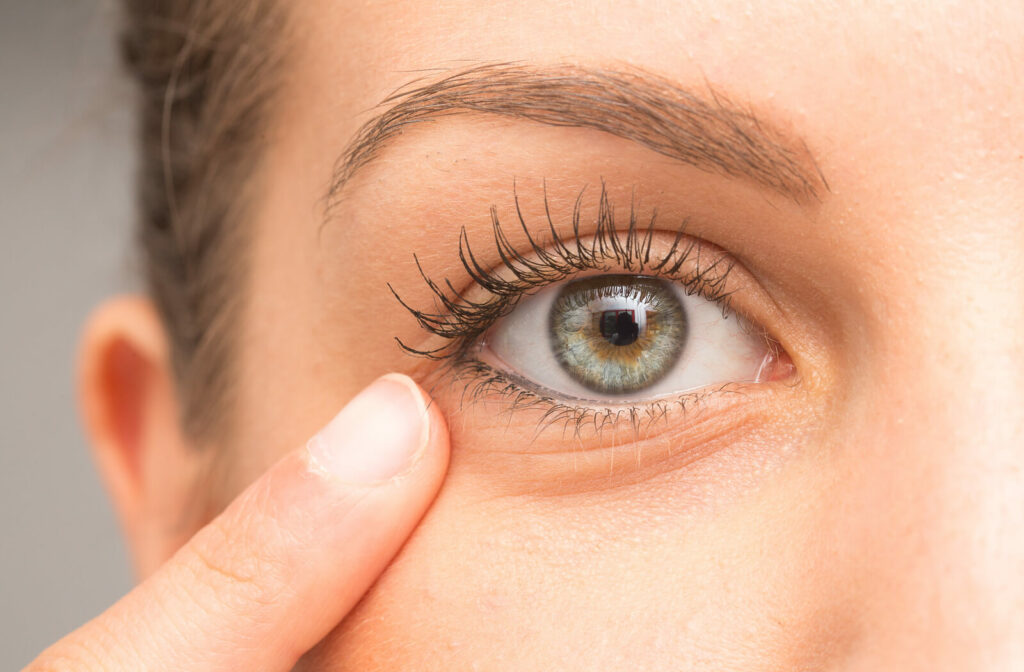Eye Health & Clogged Meibomian Glands
There are many components of your eyes crucial to supporting healthy vision. For example, when dry eye is causing irritating symptoms, clogged meibomian glands may be the problem. Multiple therapies and treatments are available to improve dry eye, but what can help unclog your eyelid glands?
What Is Meibomian Gland Dysfunction?
Meibomian gland dysfunction (MGD) is an eye condition that causes chronic dry eye. The condition occurs when themeibomian glands are inflamed or clogged. Generally, eyes have 70—80 meibomian glands. There are 30–40 on the upper eyelid and 20–30 on the lower eyelid.
When the meibomian glands are clogged, they cannot effectively produce oil (meibum), an essential tear film component. There tear film supports healthy eye function and vision.
Symptoms of MGD usually include:
- Blurry vision
- Burning or itchy eyes
- Eye fatigue
- Feeling something in the eye(s)
- Red eyes
- Watery eyes
Tear Quality & Dry Eye
Tears are crucial to lubricating and cleaning the eye. In addition, as there are no blood vessels in the cornea, tears provide nutrients for outer eye tissue. Tears also help the eye focus light, essential for effective vision. Problems with tears happen when the layers of the tear film are affected.
The tear film has 3 layers:
- Oily outer layer: The meibomian glands produce meibum, a lipid-rich oily substance. Meibum prevents tear evaporation and maintains a smooth eye surface.
- Watery middle layer: The lacrimal glands release the watery part of tears. It moistens and nourishes the eye’s surface.
- Mucus inner layer: Goblet cells produce the mucus layer. The mucus helps tears stick to the eye and improve tear flow across the eye.
Dry eye occurs when your eyes don’t produce enough tears or poor-quality tears. The quantity and quality can depend on various factors, from eye nutrition to eye disease. However, most cases of dry eye are related to tear evaporation, caused by conditions affecting meibomian gland production.
What Causes MGD?
Many factors can increase the risk of developing meibomian gland dysfunction. For example, some health conditions that affect the skin or eyes can cause or aggravate MGD, such as blepharitis, rosacea, or styes.
Other potential causes include:
- Cardiovascular disease
- Contact lens wear
- Cosmetics (daily wear)
- Environmental stress
- Hormonal changes
- Medications
- Poor nutrition
There are many treatments available to help alleviate symptoms of MGD, primarily focusing on the meibomian glands. However, suppose there’s an underlying cause, such as disease or inadequate nutrition. In that case, it may benefit your eyes to seek additional treatment. Your optometrist can provide recommendations for eye nutrition and eye disease.

Unclogging Meibomian Glands
There are many treatment options for meibomian gland dysfunction. Primarily, the goal of treatment is to improve the production or the flow of meibum through the glands.
Lid Therapy
There are multiple forms of lid therapy. Some you can try at home, and some are performed in-office. For example, you can use eyelid scrubs at home to improve eyelid hygiene, removing harmful bacteria and gently massaging the meibomian glands.
Optometrists can also perform in-office treatments to encourage healthy tear production. For example, your optometrist may offer therapy for eyelid hygiene, heated gland expression, or nutritional supplements. Additionally, they may recommend or prescribe eye drops that support the tear film.
iLUX
The iLUX MGD Thermal Pulsation Device is a handheld device for lid therapy that applies both gentle heat and compression at the same time directly to the eyelids. The combination of heat and pressure encourages the flow of oil to unblock the mybomian glands.
iLUX is a safe and effective way to treat MGD. It is also a very convenient procedure that can be done at the optometrists’ office, and takes a total of around 10 minutes for both eyes to be treated.
BlephEx
BlephEx is a type of lid therapy that uses a handheld device to gently exfoliate and cleanse the surface of the eyelids. The treatment reduces bacteria and inflammation to open the meibomian glands.
BlephEx is primarily used for blepharitis, another chronic condition causing dry eyes. However, blepharitis and meibomian gland dysfunction often occur simultaneously.
Intense Pulsed Light (IPL)
Intense pulsed light (IPL) uses light wavelengths to help reduce bacteria, decrease inflammation, and melt the oil clogged in the meibomian glands. During IPL treatment, the eyes are shielded, and warm light is applied to the area around the eyes.
Eye Nutrition
Eating well promotes healthy eyes and vision, but some nutrients are beneficial for preventing and alleviating dry eye. For example, omega-3 fatty acids can reduce inflammation and support the oily layer of tears. As a result, oil flow is improved, helping to unclog meibomian glands.
Omega-3 fatty acids are available through nutritional supplements and a variety of foods, including:
- Fish & seafood (salmon, mackerel, tuna, herring, sardines)
- Nuts &seeds (flaxseed, chia seeds, walnuts)
- Plant oils (flaxseed oil, soybean oil, canola oil)
- Fortified foods (eggs, yogurt, milk, soy beverages, infant formulas)
Warm Compresses
A warm compress can help soothe dry eye symptoms and open the meibomian glands to improve oil flow. The heat can relax the eye, add moisture, and slow tear evaporation.
You can easily make a warm compress at home. You just need a clean cloth and clean, warm water. Remember to keep it warm, not hot! The temperature should be comfortable, as your eyelids and the skin around your eyes is thin and can be sensitive.
Ask Your Optometrist About MGD
Uncomfortable eyes lead to uncomfortable vision. When your tears need support, contact eyeDOCS. Our knowledgeable team can develop a customized treatment plan to help improve your eye health.
After an assessment, we can evaluate the best possible options to help you find relief. Book an appointment today to get started on your eye care journey.




